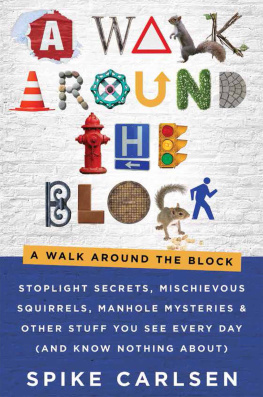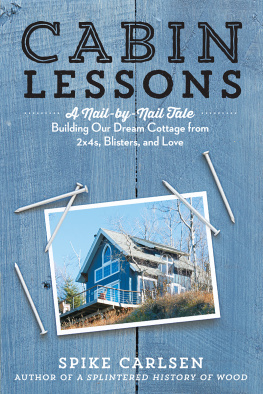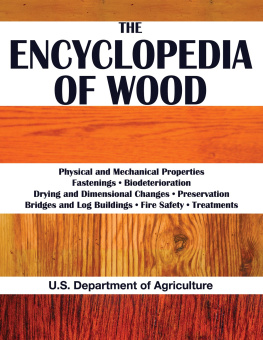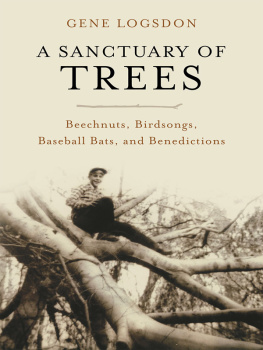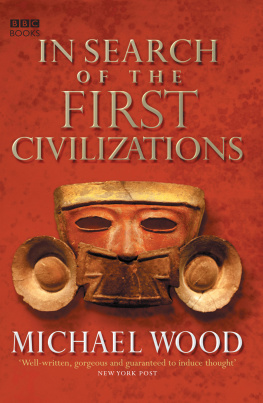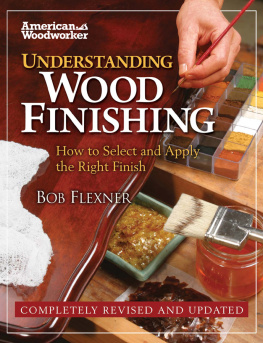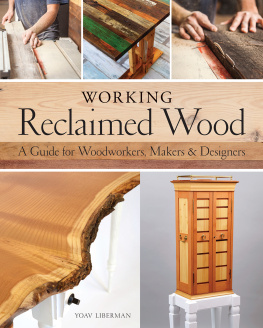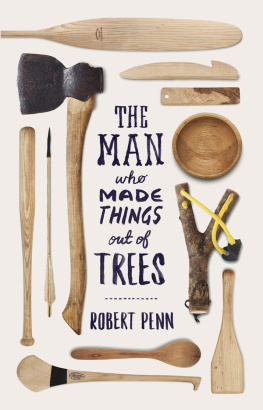For Kat: My xylem, my phloem, my roots, my sunshine,
the love of my life.
W hen we think of woodand few of us domost of us picture the stacks of two-by-fours in the aisles of our local home center or the stuff we throw into the fireplace on cold winter nights. Wood doesnt rank much higher on our things-that-amaze-us list than water or air. We chop our onions on it, pick our teeth with it, pin our skivvies to the clothesline with it. Most people think of wood as just another thingand theyre correct.
But lets look at life for a minute without this thing. For starters, the book you are now reading wouldnt exist. If you needed to dab your eyes a bit over that fact, you wouldnt find a Kleenex or Kleenex box in the house. In fact, you wouldnt find the house, or the chair you are seated in or the floor its standing onat least not in the form to which you are accustomed. You wouldnt have the pencil in your pocket, the rubber heel on your shoe, or the cork you popped from the pinot noir last night. There would have been no violins at the concert you attended last week, no baseball bats at the ball game you watched last night, no telephone poles to carry your digital messages earlier today.
We use wood for chopsticks, bridges, and charcoal. From the cribs we sleep in as infants to the caskets in which well be buried in death, wood touches us in a real and personal way, every day. How could we take wood for granted?
And now I step off my soapboxalso made of wood.
If one thinks hard enough, one comes to realize that wood is a remarkable substance. And equally remarkable are the stories it has to tell. Its thrilling to run your hand across a polished tabletop in Bob Teisbergs showroom, but its even more thrilling when you learn the slab of wood is fifty thousand years old, dug up from the peat bogs of New Zealand. The delight in running your fingers across a dovetailed cherry toy box built by Ron Faulkner is made more delightful by the knowledge that this woodworker is blind. The awe in watching a catapult hurl a pumpkin the length of a football field at the annual Punkin Chunkin Contest is made all the more awesome when one reads about the War Wolf, which, in 1300, could hurl stones weighing 300 pounds an equal distance.
In recent years a spate of books examining a single commodity has emerged. There are books on salt, dirt, dust, chocolate, clay, tobacco, ice, coal, cod, gold, and more. In every case, the authoras is the authors duty to domakes it clear that without the subject at hand, the world today would not be as we know it. By the time youve finished reading Cod: A Biography of the Fish That Changed the World, youre convinced the United States would still be a British colony if it werent for the billions of cod along Americas coast. As you turn the last page of Coal you believe youd be riding to work on horseback if it werent for the black stuff. Skimming Clay makes you realize that the sticky stuff is responsible for everything from the glossy coating on the magazines you read to the toilet you sit on while reading them.
Though Ive tried to temper my enthusiasm, this book joins the ranks of the commodity pitchmen. Without wood, its not that wed just be a little hungrier or a little bit more behind the times; its that weand I go out on a limb heresimply might not be here at all. We wouldnt have had the fire, heat, and shelter that allowed us to expand into the colder regions of the world. We wouldnt have had boats for exploring this wonderful planet. If every oxygen-generating, carbon dioxideconsuming, wood-producing tree on earth were to suddenly die, humankind would have a rough go of it indeed. The adage Man has no older or deeper debt than that which he owes to trees and their wood has a truthful ring to it.
Still, questions remain: Why do we continue to employ wood, even when cheaper, more durable materials are available? Why is it that, though we can create a dining room table out of carbon fiber that will never scratch, stain, or split, we still prefer to put up with scratchable, stainable, splittable wood? Why is it that with electric pickups and sound effect modules that can create every sound in the book, we still choose the wood violin over its synthesized substitute? Why is it that Jimmy Carter, one of the busiest people on the planet, with the wherewithal to buy whatever furniture his heart desires, continues to craft cradles, tables, and chairs? Why is it that with steel studs that are lighter, cheaper, and less prone to fire and rot, we still build our houses of wood? This book is an attempt to find out.
Of course, this book didnt find out everything . Not even close. In fact, as the title of the book indicates, all we were really able to fit in were a few splinters of information. But we think we found some of the most interesting splinters.
Here is a look at wood and its splintered history.
A s I drive toward Ashland, Wisconsin, home of the company that lays claim to selling the oldest workable wood on the planet, the convoys of fully loaded pulpwood trucks I pass remind me of the rich, ongoing logging tradition of the area. Im in Sawdustland. Its a fitting place for a company named Ancientwood to call home. I find the pole building that serves as the warehouse/store/Internet headquarters, and I find owner Bob Teisberg. He greets me by making three introductions. The first is to his shop helper, Dante; the second is to a mammoth slab of kauri wood standing by the door; the third is to his sense of humor. Yep, we call that slab Dantes Inferno. He went through hell for two straight weeks sanding and finishing that baby. But just look at it. And when you look closely at this gigantic slab, you set your eyes on things of an unworldly nature. For starters, its 5 feet wide, 7 feet tall, and 3 inches thick. Its sanded smooth as glass, with a finish and grain that not only glow but dance like a hologram, depending on your viewing angle. The color, figure, and texture are unlike any wood Ive ever seen. And the reason is, it is a wood Ive never seen. Its a wood most people have never seen. The slab is from a fifty-thousand-year-old kauri tree, mined from the bogs of New Zealand.
The route a slab of wood needs to travel to get from 48,000 BC on the North Island of New Zealand to AD 2006 in Ashland, Wisconsin, is not an easy, inexpensive, or clean one. Originally we thought some cataclysmic eventa tsunami, an earthquake, an asteroidwas responsible for the death of the trees, explains Teisberg, the North American distributor for Ancient Kauri Kingdom wood. But when they sent samples to the University of New Zealand for study, they found the trees died at different times and fell in different directions, so our best guess is they died of natural causes. But it doesnt matter so much how they died as where and when they died. When most trees die, they keel over and decompose within a few decades. But these kauri trees keeled over into bogsan oxygen-starved, fungus-free environmentthat created a time-warp cocoon that preserved the timber in pristine condition, until a Kiwi by the name of David Stewart happened along.
The Ancient Kauri Kingdoms informational DVD, in which Stewart stars, shows the process used to extract the trees. Most of the trees are found in farm pastures, where they reveal their presence by a small exposed section. If youre a farmer you really dont want these things in your field, explains Teisberg. Nothing grows on them, and animals can break a leg if they fall through a rot pocket, so theyre just a nuisance. When they go into an area, theyre never quite sure what condition or size the trees will be in; theres really nothing scientific about it. They get in there with a backhoe, give the exposed part a wiggle, and if the land 100 feet around them moves they know theyve got a monster. And theyve found some monsters.




